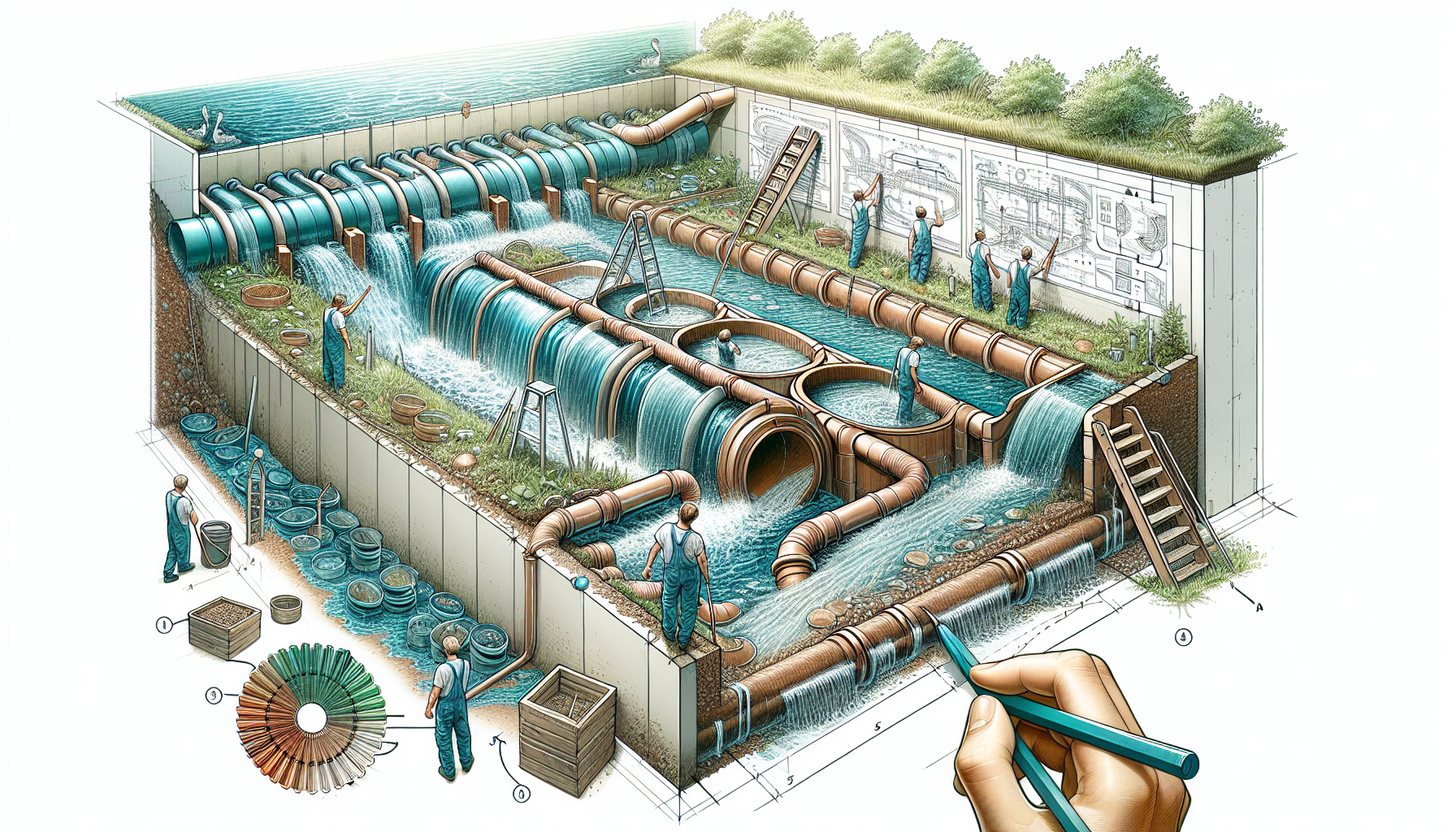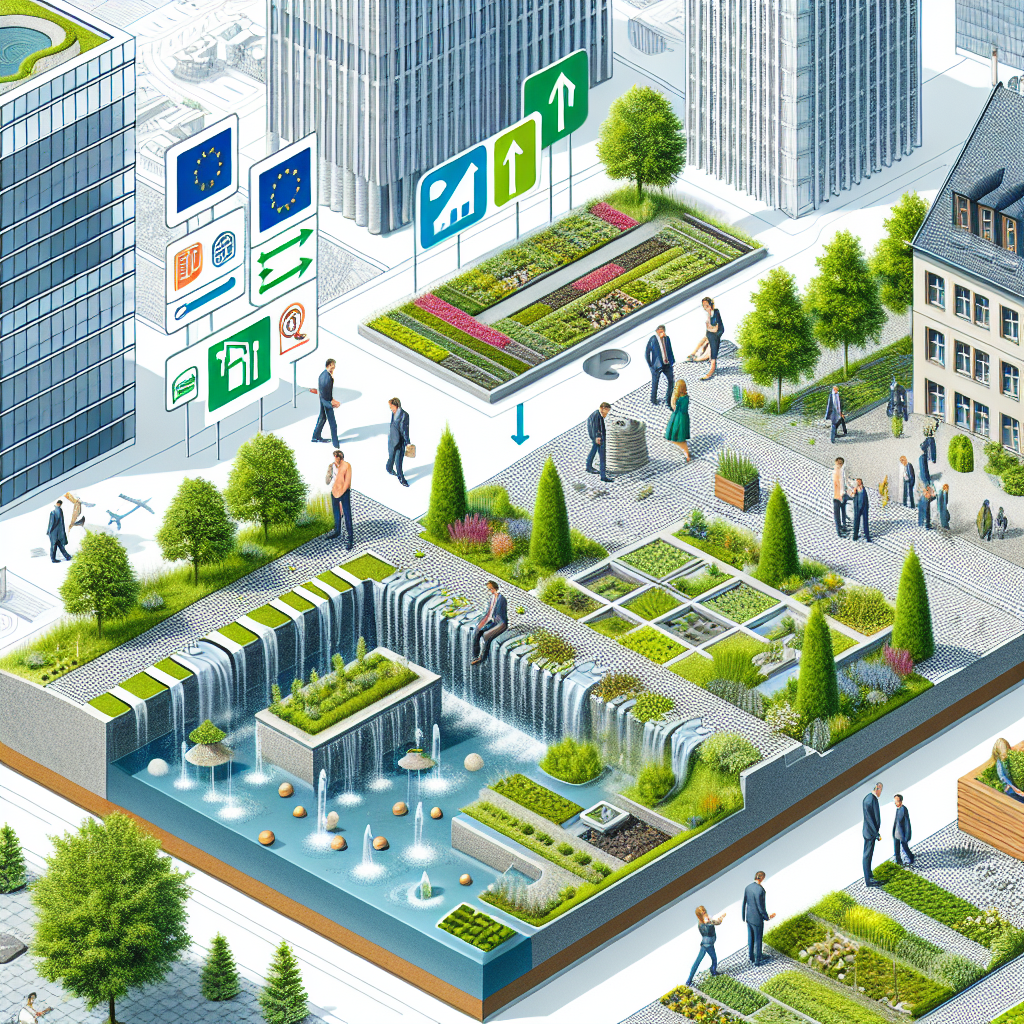Introduction to Sustainable Drainage Systems (SuDS)
In an age where urbanisation continues to rampantly transform landscapes worldwide, managing surface water runoff has become increasingly significant. Traditional methods of channelling water through pipes and sewers may no longer suffice. Enter Sustainable Drainage Systems (SuDS), innovative approaches that mimic natural processes to manage rainwater, offering a plethora of environmental and social benefits that redefine urban planning.
Understanding the Key Principles of SuDS
Sustainable Drainage Systems are designed with a foundational principle: to slow down and hold back water, as opposed to the rapid removal seen in conventional systems. By doing so, SuDS allow for the breakdown of pollutants through natural processes, enhancing water quality and boosting ecological health. This form of water management not only addresses runoff but also aligns with climate resilience strategies, facilitating both urban and rural areas to adapt to unpredictable weather patterns.
Diverse Types of Sustainable Drainage Systems
SuDS are versatile, varying from small-scale solutions suitable for individual plots to expansive systems capable of managing runoff from entire urban regions.
- Source Control: These measures initiate water management right where rainfall lands. Examples include:
- Green Roofs: Vegetative layers on rooftops absorb rainwater, mitigate heat, and enhance urban biodiversity.
- Permeable Surfaces: Paving that allows water to infiltrate, significantly reducing the occurrence of waterlogging.
- Infiltration Trenches: Shallow, stone-filled trenches that promote groundwater recharge.
- Site Control: Designed for larger catchment areas such as housing estates, these encompass features like:
- Swales: Long, shallow channels that direct water efficiently while allowing for absorption into the ground.
- Filter Drains: Subsurface drainage systems that filter pollutants from runoff.
- Detention Basins: Shallow basins that temporarily hold excess water, collectively reducing flooding risks.
- Regional Control: These scale up the principles of SuDS to manage drainage over more extensive areas, utilising systems that can handle a vast volume of water runoff. They ensure that stormwater is effectively managed before being released into broader water environments.
Components and Design: The Treatment Train
SuDS aren’t typically singular installations; instead, they are often designed as interconnected components known as a “treatment train.” This layout includes:
- Source Control Measures: Comprising green roofs and permeable pavements to manage initial rainwater capture.
- Site Control Measures: Incorporating swales and detention basins for larger area runoff handling.
- Regional Control Measures: Final steps such as constructing wetlands before water discharge.

Such a holistic approach ensures that runoff is managed responsibly at every level, mitigating flooding impacts and enhancing water quality.
Benefits of Sustainable Drainage Systems
The implementation of SuDS brings about numerous advantages that extend beyond efficient water management:
- Water Quality Improvement: By filtering out pollutants naturally, SuDS improve the quality of water, contributing to healthier aquatic ecosystems.
- Flood Risk Reduction: SuDS significantly mitigate both surface and sewer flooding, a crucial advantage amidst escalating climate change effects.
- Enhancement of Groundwater Recharge: With a focus on allowing water to percolate back into the ground, these systems support sustainable aquifer replenishment.
- Biodiversity and Aesthetic Enhancement: SuDS can transform urban areas into green havens, supporting wildlife habitats and creating aesthetically pleasing public spaces.
- Air Quality and Urban Cooling: They also help improve air quality while reducing the urban heat island effect, ensuring cities remain liveable during heat waves.
The Role of Ratio Seven in SuDS Implementation
Based in Nantwich, Cheshire, Ratio Seven Limited is at the forefront of providing consultancy services that align with sustainable building practices, including the integration of Sustainable Drainage Systems.
Company Overview and Services
Ratio Seven, established in 2008 by Colin Francomb, offers expert energy and building consultancy services. Their portfolio demonstrates diverse experiences, ranging from rural housing developments to urban residential sites, emphasising sustainability and modern construction practices.
Growth and Expertise
Through its years of operation, Ratio Seven has leveraged its in-depth knowledge of the house building industry. This expertise enables the company to deliver on projects effectively, balancing client specifications, deadlines, and budgets.
Service Highlights
- Specialises in energy consultancy aimed at reducing carbon footprints.
- Provides building management services that incorporate modern-day environmental concerns such as SuDS.
- Engages in projects, including the conversion of historical structures into sustainable living spaces.
Future Outlook
With plans to broaden its service offering, Ratio Seven remains committed to advancing sustainability in building practices. The company aims to introduce new services tailored to the evolving needs of both new and existing clients, reinforcing their passion and ambitious growth plans within the industry.
Addressing Common Queries About Sustainable Drainage Systems
1. Why are SuDS important in urban areas?
Sustainable Drainage Systems are crucial in urban zones primarily due to their ability to mimic natural hydrological processes, counterbalancing the impermeable surfaces that cities are dominated by. They offer solutions for flood prevention, reducing strain on existing drainage infrastructure, while also enhancing urban biodiversity and public amenity spaces.
2. How do SuDS contribute to biodiversity?
SuDS contributes significantly to urban biodiversity by creating environments similar to natural habitats within built-up areas. Integrations like green roofs, swales, and constructed wetlands attract various species—ranging from insects and birds to larger fauna—thereby revitalising urban ecosystems.
3. Can SuDS be applied in residential settings?
Yes, SuDS can be effectively implemented in residential environments. Common techniques include installing rain gardens, using permeable paving in driveways, and creating green roofs. These solutions not only manage runoff effectively but also enhance the aesthetic and environmental quality of residential neighbourhoods.
Conclusion to Sustainable Drainage Systems (SuDS)
Sustainable Drainage Systems (SuDS) represent more than just an alternative to conventional drainage; they embody a shift towards holistic and resilient water management amidst growing climate challenges. These systems not only enhance water quality and mitigate flooding but also enrich urban environments, supporting biodiversity and improving life quality. Companies like Ratio Seven are pivotal in this transition, providing the expertise and dedication required to integrate these systems into contemporary building practices.
By understanding and embracing SuDS, cities and communities have the opportunity to develop in harmony with nature, ensuring a sustainable future for generations to come.




